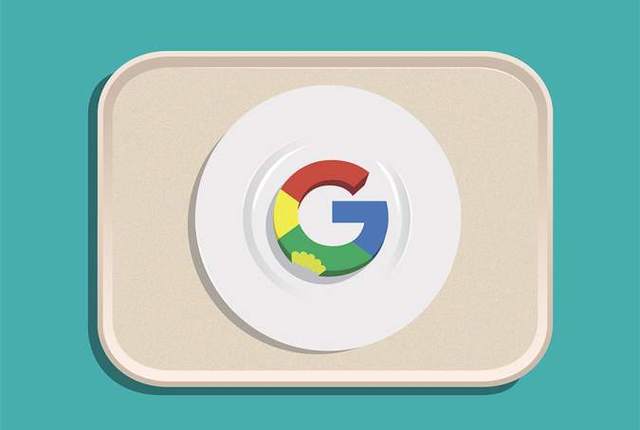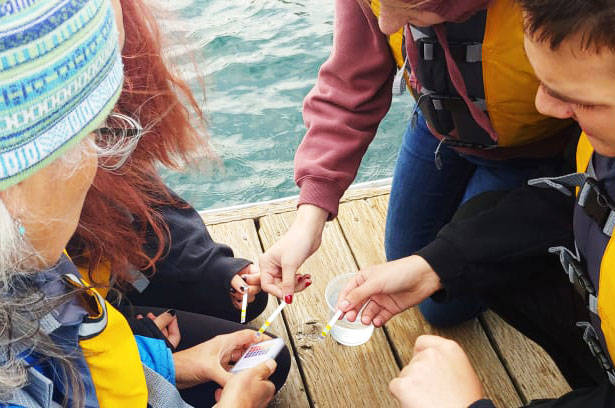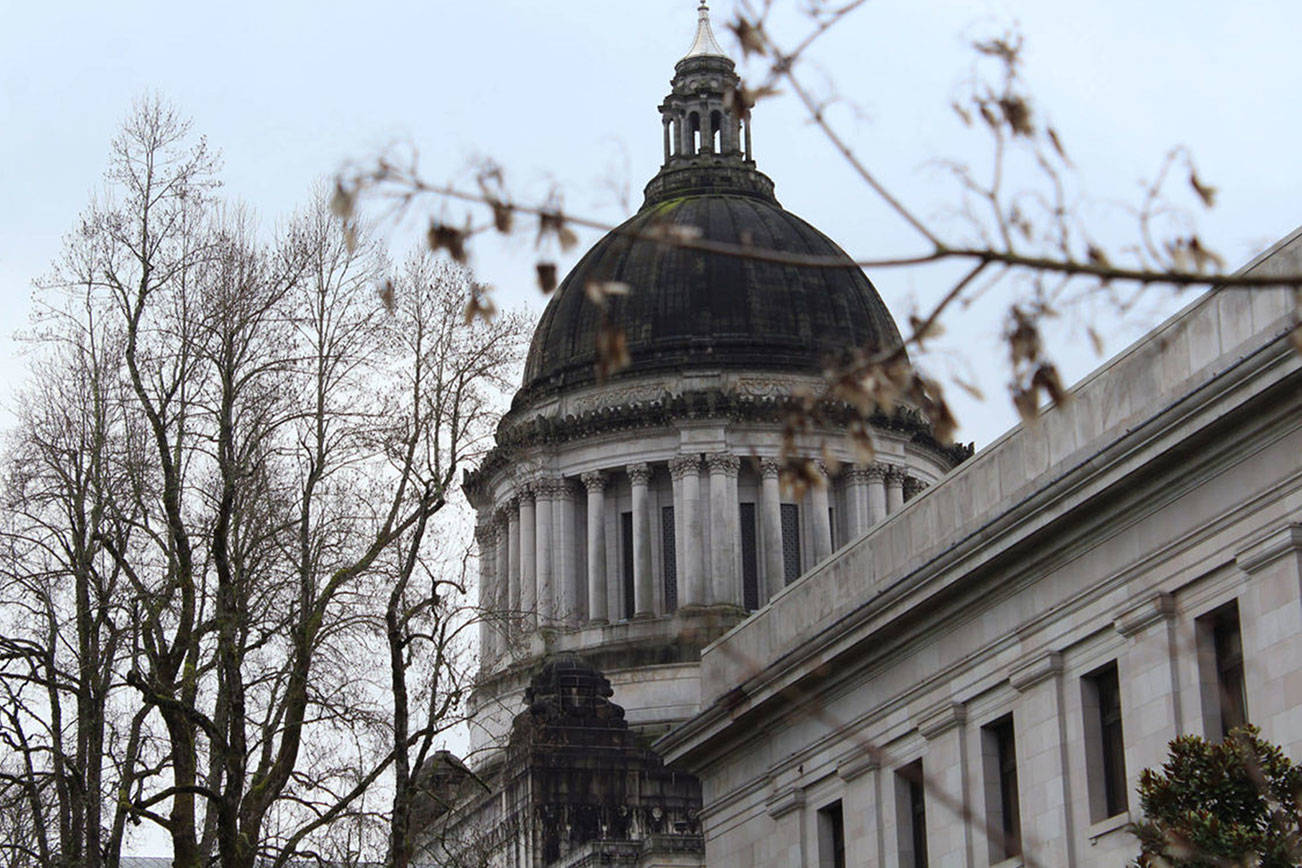Back when Google Kirkland was just one complex, the “new” cafeteria served things like mushroom rigatoni and Israeli couscous with lime-scented water.
“And that’s, honestly, about a 2 out of 5,” my buddy would tell me as I stuffed my face in style for free.
Varied and well-prepared entrées, vegan options, stations for carving and charcuterie: a “2 out of 5” at Google was a 5 out of 5 at a tech company like Microsoft, and completely inconceivable in any other workplace. But my buddy was right: It wasn’t perfect. There were trays, you had to serve yourself, and the windows overlooked a parking lot.
Now all these bugs have been fixed, the culinary experience optimized. My friends and I used to joke that the Google cafeteria was “the Eastside’s best restaurant” and now that the campus’s much-needed second complex is open—employees started moving in in late January—it might be true. For there is a new new cafeteria, and it is the shiny Chromecast to the old one’s Google Plus.
I pull in around noon. There is ample parking beneath the new building, several charging stations for electric cars, and no security on the elevator up to the cafeteria, nor at the entrance to the cafeteria—you could do this for free, every day, by waiting for someone to open the complex door, then slipping into the dining room with the rest of the feeding frenzy. You’d have to look presentable enough, but not too presentable. I sneak in, but my buddy goes back and grabs me a visitor’s badge: retroactive compatibility.
In other words, you don’t always need a friend to get in, but you can always get in with a friend.
From the area near the entrance, you can see the skybridge to the first complex, spanning such dangers as a playground and a volleyball court. In the back, six friends fan out around a semicircular booth; the floor-to-ceiling windows admit mellow light and spectacular views of Lake Washington.
I work my way through the cafeteria (restaurant?) methodically. The dining areas, except one intolerably called “KitchenSync,” are named after Northwestern geographical features—a kind of Disneyland-parking-lot directory for climbing-gym members who fancy themselves outdoorsmen. At “West Olympics,” there are plated dishes of “(Plant-Based) Lemon-Herb-Marinated Tofu, Roasted Parsnips, Stewed Emmer, and Pinenut Gremolata.” Tofu is bullshit, so I wander off to “West Cascades” and get a flatbread and a panino.
I also grab a Caesar salad, a cucumber salad, a pork cutlet, and two sliced cooked carrots. “Someone made a bug report about the old cafeteria to complain it was too healthy,” intimates my homie. I have no such complaints.
The cucumber salad lacks style, the pork cutlet is as skippable as a daily stand-up meeting, and the carrots are as dull as a day of data entry. But the panino’s crunchy bread and piquant mustard are perfect for its own pork, the Caesar salad is tastefully dressed and croutoned, and the “flatbread,” which might elsewhere have been called a “pizza,” is a true-to-life simulation of Neapolitan white pie.
“This is way better than the old Google lunch,” I say.
“Right,” says my buddy—the only one of our seven-some who works at Google—“but don’t spoil your appetite; I’ve got to give you guys the tour.”
In bourgeois society, one does not simply refuse a tour.
We empty our trays and go out.
The next stop is the coffeeshop-cum-juice-and-smoothie-bar. I order a spiced honey latte and a strawberry-banana smoothie with mango juice. The barista goofs the second order, and I’m about to say something but decide against it on grounds of feeling like a huge douche. The coffeehouse conversation revolves around not people but algorithms. My friend Zack gesticulates a little too wildly, spilling a drink.
A barista smiles and mops up the mess. She goes back to her post and the shop talk resumes, filling a service-worker-sized void.
It’s weird. No wonder tech workers labor so hard to lessen labor: Tech freeing the poor from working means programmers can be surrounded by nice things, insulated from the wider world, with no humans to remind them it’s broken. At Google—on its surface the least objectionable of Seattle’s big three software companies—the mad-extravagant digs are kept running by stinted service workers, who are never tipped or approached as if anything resembling a commercial transaction is taking place. The class dynamics at most workplaces, or anywhere people are served, are awkward; at Google, they’re extremely awkward—and dangerously close to being taken for granted.
The service workers work regular hours, but their plight might give you a strong whiff of the “sharing economy,” where “instaserfs” will deliver food, do laundry, and make lattés for the beneficiaries of software. In return, the software companies will make them as invisible as possible, less like co-workers or subordinates and more like servants at an English country house. The creators of apps and the service serfs are kept apart, a world of class between them. I’ve come up with a word for this tech-meets-segregation phenomenon: app-artheid.
“You ever feel weird about going in here and asking for free stuff, every day?” I ask my buddy.
“You mean from workers who make one-tenth of what devs do?” he says, “devs” being shorthand for software developer. “Yeah, of course.”
“It’s all the excess that makes it awkward.”
“Yep.”
A member of our group actually used to cook for Facebook, and he speaks despairingly of the conditions: “Low wages, no benefits. Beyond all that, we were just treated with very little humanity by the tech workers. It really felt like we did not exist to them—not fully.”
He describes a vast hinterland beyond the shallow hill and squat McMansions: “I was working with one woman who was living in a two-bedroom apartment with four children in Burien,” he continues. “Another guy lived in one of the worst apartments I’ve ever seen, directly below the freeway in Wallingford.”
He concludes: “Why are these people being paid one-tenth of the programmers? When two-tenths, for example, which Google or Facebook could afford, has the potential to dramatically change their lives for the better?”
The tour continues without the baristas.
On we go to the gym (dismal treadmill attendance); the steam room (naked men); then back upstairs, past a hammock suspended by a crane (and other “objets d’art ”), to a fridge stocked with, well, everything.
But the pièce de résistance is the speakeasy, tucked away behind conference centers, TV rooms with plush upholstery, and the odd space here and there where people are working. A friend mixes martinis; three others drink them. I pour a craft beer—nameless, nondescript, tasty—from one of two refrigerated kegs. Self-service: what a relief.
Over the course of the tipple, the crowd becomes voluble; Zack, who has been sequentially fired and hired at Amazon, Google, and Microsoft, begins to talk about his tenure at the latter. “You have to pay for the cafeteria food in Redmond,” he says, “and it’s not that good.”
A random Googler pricks up his ears. “Are we shitting on Microsoft right now?” he says. “Because that’s a Google Kirkland pastime, as far as I’m concerned.”
He glances at another friend’s badge and says, as if to a subaltern: “What’s the food like at Amazon?”
The friend just laughs.
A jovial man in blue-green tie-dye waddles up. “Are we talking about food?” he says.
“Yep,” I say. “Your cafeteria is the best restaurant on the Eastside.”
“I don’t know if this is the best restaurant on the Eastside,” he answers, launching into a discourse on haute cuisine: “There’s a place in Redmond that is the only authentic Hakka Chinese restaurant in the Seattle area. For their signature dish, they open a duck, stuff it full of rice, spices, savory things, and cut it into slices. There’s also Café Juanita; I don’t know if it’s the best, but it’s some of the better Italian food. And Herb Farm, if you want to go all the way out to Woodinville. You live in Seattle, yes? You don’t make it out to the Eastside often?”
“Nope,” I boast.
We finish our beers, wait until 2 for the crêperie to open, and get in line. The Hispanic man, kept by app-artheid behind the crêperie’s faux-French window, is good at his job. The entire product is excellent: The whipped cream is mild in sweetness and fluffy in consistency, the apricot jam is light and devoid of cloying notes, and the wafer-thin crêpe is exquisitely sized and textured.
“What are we doing here?” I ask my buddy.
“Enjoying ourselves,” he says.
“Then the release was a success,” I say.
I thank him and drive back home.
Seattle Weekly is your source for the latest in dining and drinking in the city. If you know something we should know, e-mail food@seattleweekly.com. Follow us on Facebook and Twitter. Sign up for our dining newsletter to get the latest in food news and reviews sent straight to your inbox.








